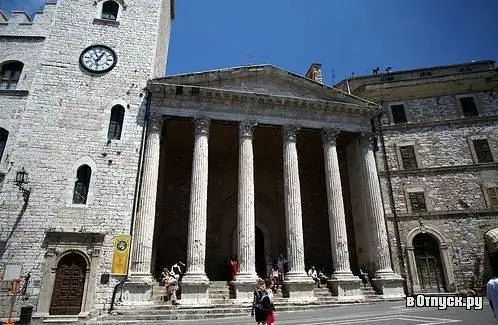
Description of the attraction
The ancient temple of Minerva was built in Assisi by the Romans in the 1st century BC. At that time, the square in front of the temple was the main center of the city, and, probably, some of the first Christians were executed here. By the end of the 4th - the beginning of the 5th century, paganism was almost universally prohibited, and the temple was abandoned, but, fortunately, not destroyed. Around the 6th century, the Benedictine monks revived it and used it for their own religious purposes. They divided the interior into two sections, creating living quarters at the top and the Church of San Donato at the bottom. In the 13th century, the monks handed over the temple to the use of the newly formed commune of Assisi - from 1215 to 1270 the city government sat here. Then, until the 15th century, the building of the temple was used as a city prison.
Only in 1456 the temple was returned to its sacred significance, and the church of San Donato was reopened to the parishioners. At the same time, the Italian Renaissance sparked an interest in classical art and architecture. That is why in 1527 - 1530 it was decided to completely restore the antique temple.
When a female statuette was removed from the ground, it was decided that the temple was dedicated to Minerva, the goddess of wisdom, although the discovery of a metal disk with the name of Hercules later on makes it possible to make a more reliable assumption that the temple was nevertheless erected in his honor.
Surprisingly, the facade of the temple is very well preserved: it is decorated with six fluted columns over 2 thousand years old, which support Corinthian capitals and stand on plinths leading to the pronaos - a half-open part between the portico and the naos. In 1539, at the initiative of Pope Paul III, the inner sanctuary of the temple was turned into the Church of Santa Maria Sopra Minerva (there is a church with the same name in Rome), and in the 17th century some baroque elements were added here. At the same time, the temple was transferred to the monks from the Franciscan order.






